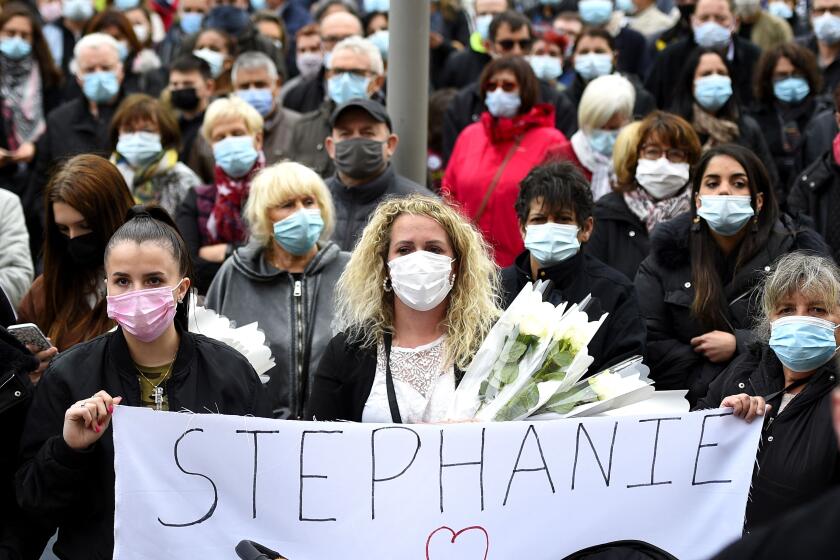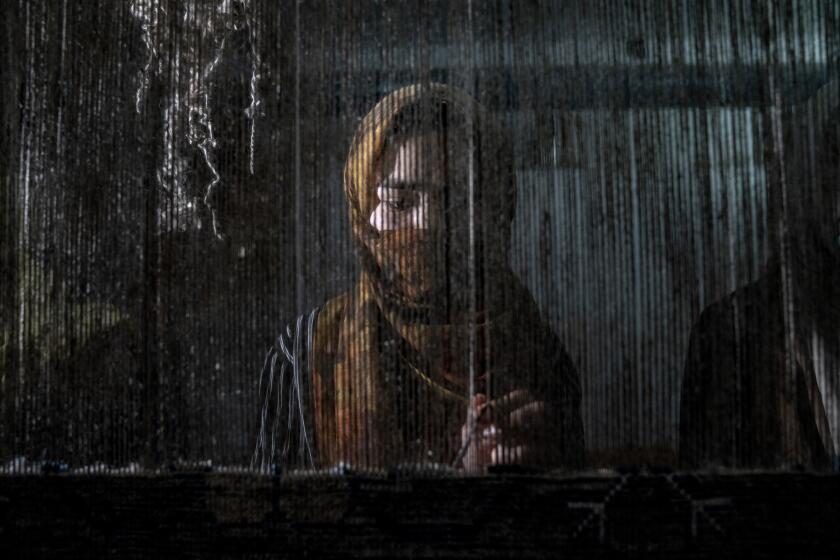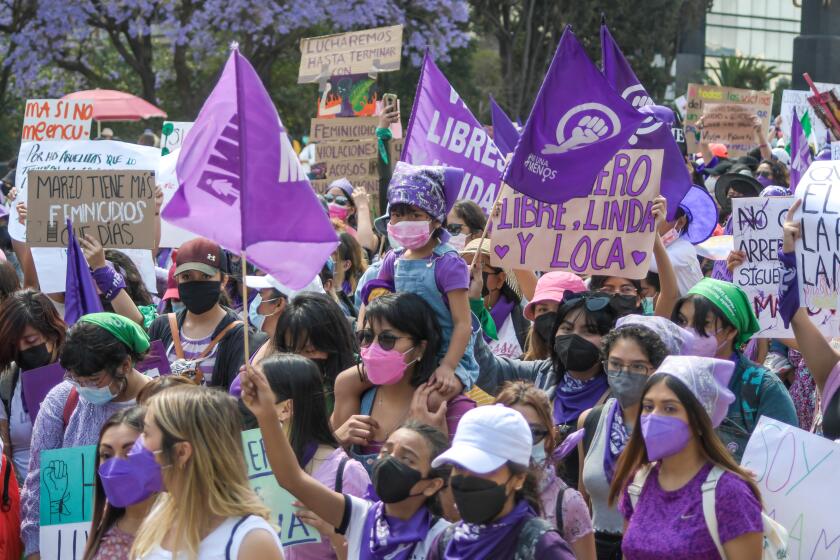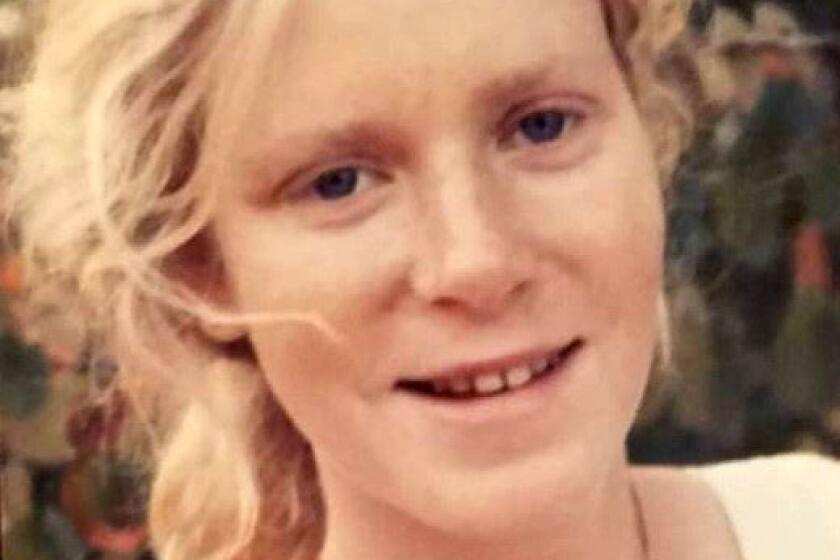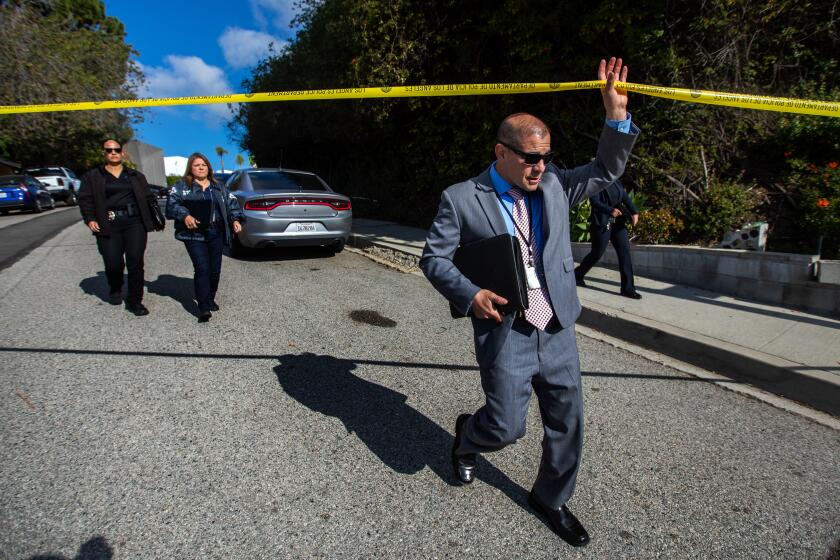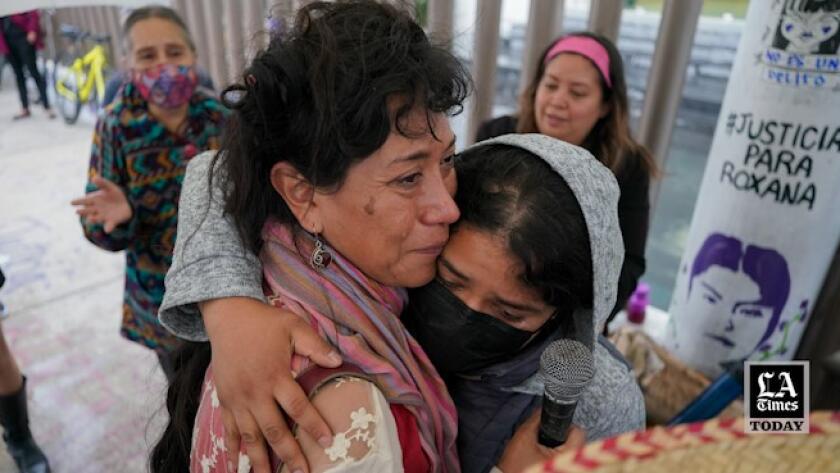
- Share via
MEXICO CITY — Leer en español
On Oct. 31, the eve of Day of the Dead, Ricardo Calderón and a friend embarked on a bicycle excursion from Mexico City south to Tepoztlán, a popular day-trip destination. The two veered off the road for a break outside the colonial town.
That’s where they made the disturbing discovery: a woman’s body in the brush beneath a highway bridge, within earshot of passing traffic.
She was on her back, her arms outstretched, her beige dress pulled up above her waist, a high-top white sneaker on her right foot. Her hair was in braids. She had no ID, no belongings.
The cyclist notified emergency services, but he feared police would blow off the case — just another murdered woman in a country where women are killed with numbing frequency, many of them never identified.
Using his cellphone, Calderón photographed some of her tattoos, including a miniature dinosaur and a Joker face, and her metal necklace, bearing a peace sign inside a heart.
He went online two days later to post the tattoo photos — closely cropped out of respect for the victim — in hopes that her loved ones would see them.
“SHARE PLEASE!” he wrote. “I don’t want her to end up in a common grave.”
Femicide — the killing of women simply because they are women — has become an urgent issue in Mexico.
An average of 10 women or girls are slain each day, according to the government. Surveys of those 15 or older show that 70% have experienced some kind of violence.
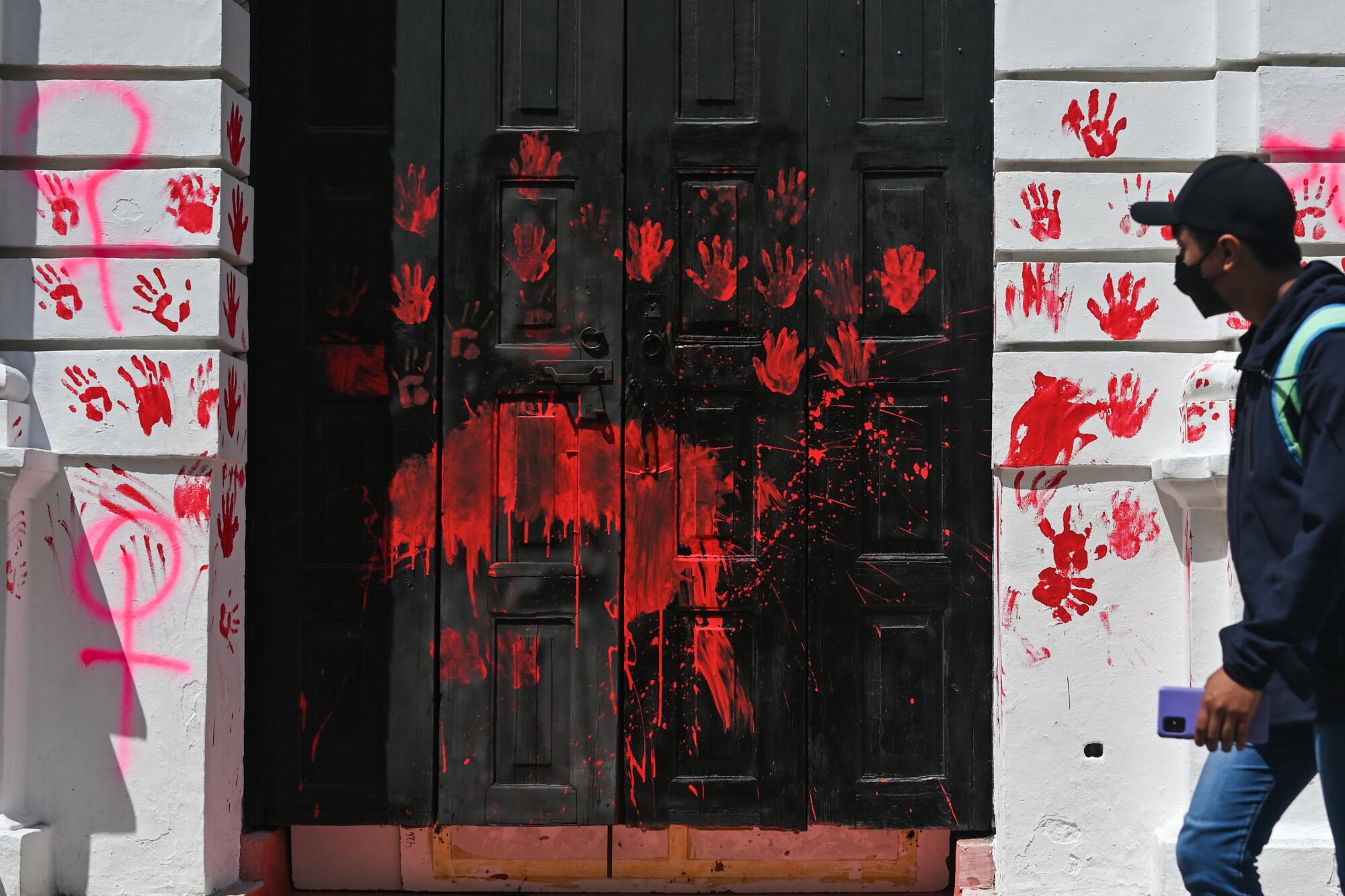
Prosecutors, police and the courts have historically shielded male abusers and allowed class, status and wealth to win out over justice. And though many regions of Mexico have improved investigative procedures and instituted stiffer penalties in femicide cases, activists say the legal system remains deeply sexist. Victims are often blamed for their own demise.
“I don’t trust authorities anywhere in Mexico to resolve cases of femicide,” said Paola Zavala Saeb, a human rights lawyer. “All over the country there is corruption and impunity.
“Some cases spark media interest and officials pursue them because of that,” she said. “But how many cases do we never even hear about?”
The death of the woman with the tattoos could have been one of those.
A wave of killings of women by their current or former partners has rattled France, where critics blame a deeply entrenched sexism.
But this case would go on to captivate and enrage the public with gruesome video of a man hauling off her body, dueling autopsies and accusations from Mexico City’s mayor — the first woman elected to lead the capital — that a prosecutor engaged in a cover-up.
Thanks to a cyclist’s compassion and the persistence of family and friends, this woman’s name, unlike so many others, would become widely known: Ariadna Fernanda López Ruiz.
Her smiling face would stare from protest banners demanding a stop to the epidemic of femicide.
At 27, López was the youngest of five siblings from the blue-collar eastern precincts of Mexico City. Everybody called her Ari.
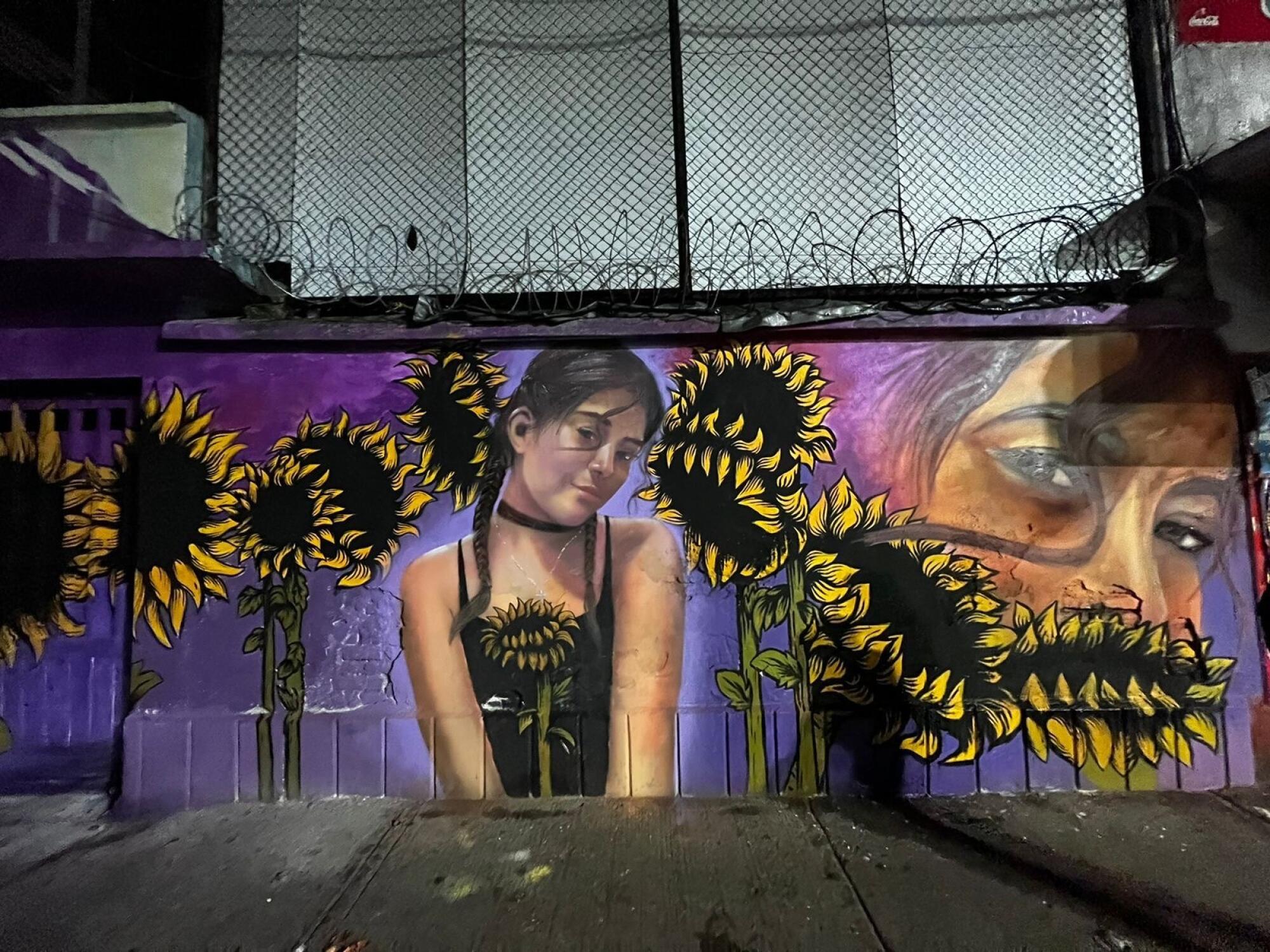
“Ari was always happy, always wanted to be dancing, singing,” recalled a friend, Margarita Solís.
López was a single mother with “a lot of dreams” who fantasized about moving with her 7-year-old son to the Caribbean resort city of Cancún, said her brother, Omar Rodríguez.
In the meantime, she had been making do as a beautician and a waitress in the capital.
One of the places where she had waited tables was the Sixtie’s Bar & Rock, a humming joint where hostesses earn commissions for drinks shared with patrons. It was there that she crossed paths with customers from starkly different social strata.
Since the Taliban takeover of Afghanistan, the country has become the most repressive in the world for women and girls, the United Nations says.
“She came to know people with a lot of money,” said her brother, who runs a taco stand in the capital. “People who lived opulently.”
One of them was Rautel Astudillo García, a 34-year-old self-styled playboy from a prosperous family in Morelos state. He had bodyguards and a black SUV, often driven by a chauffeur, and resided in a bachelor pad in the shabby-chic Roma Sur neighborhood of Mexico City. He told people vaguely that he was in the import-export business.
“Everyone here knows him,” said Alejandra, a Sixtie’s hostess who spoke on condition that her last name not be used. “I don’t know what kind of businesses he had, but I’ll tell you this: He would spend a fortune, sometimes more than 50,000 pesos” — about $2,800 — “in one night. He liked to show off in front of everyone, make it known he had a lot of money.”
On the evening of Oct. 30, a Sunday, López went out partying with Astudillo and his girlfriend, 20-year-old Vanessa Flores, another Sixtie’s alum. But the next morning, when López didn’t return home or answer messages, her roommate became concerned and informed López’s family. With no word on her whereabouts, relatives and friends began a frantic search.
Two days later, the roommate recognized the tattoos that Calderón had posted online. One read “Armida” — the first name of López’s mother, who had died three years earlier of cancer. Another was of a sunflower, her signature symbol.
Once the family got in touch with Calderón, he shared more photos, which showed considerable bruising. It looked like López had been badly injured.
An entourage of 15 relatives and friends rushed in three cars to see authorities in Cuernavaca, capital of Morelos, the Mexican state where Lopez’s body was found.
Breaking News
Get breaking news, investigations, analysis and more signature journalism from the Los Angeles Times in your inbox.
You may occasionally receive promotional content from the Los Angeles Times.
They waited for hours at the morgue until attendants brought out some blurry images. Her father confirmed her identity.
Next, the group headed to the state prosecutor’s office, where some were ushered in to make statements.
Also showing up to meet with prosecutors were Astudillo and his girlfriend. The couple’s arrival unnerved López’s roomate and another close friend, Sara Martínez.
The Morelos investigators were hostile and treated López’s roommate like a suspect, Martínez recounted later on TikTok. Prosecutors seized the cellphones of Martínez and the roommate. Both had received text messages from López saying she was with Astudillo and his girlfriend on the night she was last seen alive.
After 3 a.m. — 10 hours after they had arrived in Cuernavaca — the family was finally told to come back after daybreak to retrieve López’s body.
When they returned, the relatives noted numerous bruises, heightening their growing suspicion that she had been a victim of violence.
“So all of us siblings spoke and we decided at that moment to go to the Mexico City prosecutor,” Rodríguez said.
The protest, held on International Women’s Day, focused on femicide — a term used to describe the killing of women because of their gender.
It wasn’t a simple decision — a humble family going up against a wealthy, powerful man such as Astudillo.
“I’m not going to lie,” Rodríguez said. “We spoke of the danger that this was going to represent.”
That evening, the family held a wake at a funeral home in Mexico City. Among those paying last respects: Astudillo and his girlfriend.
By then the mystery of what had happened to López started to capture the attention of the press, and several reporters also showed up.
Astudillo played the part of benefactor for López.
“It’s like she chose me for this,” he told the journalists. “Count on me for everything.”
Asked about the last time he saw López before she disappeared, Astudillo described a fun-filled evening: restaurant, drinks, a boisterous redeployment to his flat. He said that everyone was a bit tipsy and that he assumed López had left his apartment and gotten a taxi or Uber.
“I lost communication with her there,” he said.
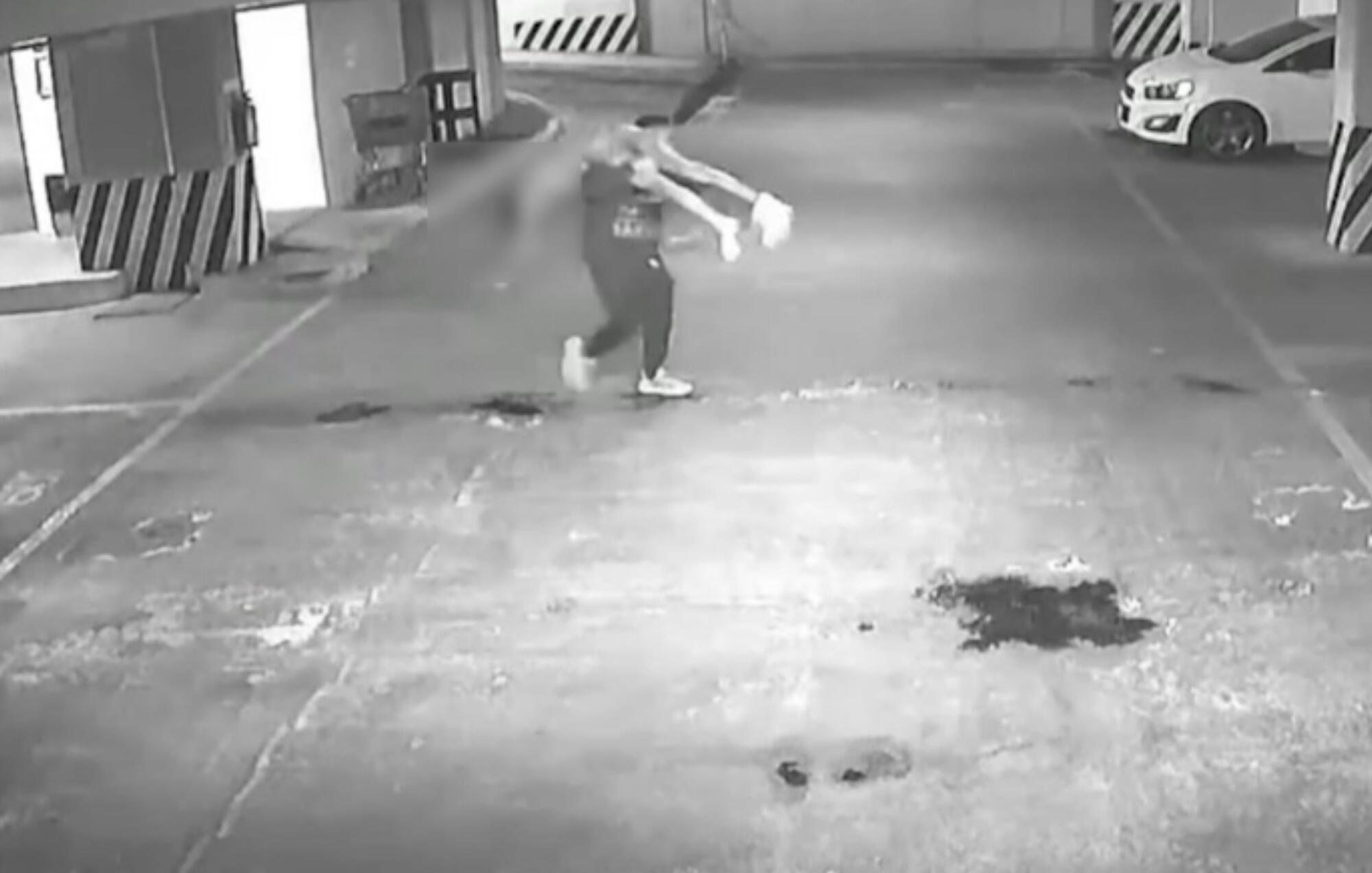
López’s niece, Valeria Rodríguez, delivered a teary-eyed farewell, speaking as if she herself were López.
“I loved to enjoy life until they took me away,” she said. “Some people who passed below a bridge on the Cuatla highway found me lifeless, tossed away and forgotten like I was nothing.”
Astudillo’s girlfriend addressed “my precious Ari” in an Instagram post the same day as the wake.
“It’s difficult to say goodbye, and more so knowing that your passing was from a violent and cowardly act,” Flores wrote. “I write to you with a soul torn to pieces knowing that surely you fought until the end, and there was no one to help you.”
In Morelos the next day, Uriel Carmona, the state’s chief prosecutor, told reporters that an autopsy had determined that López had died from “grave alcohol intoxication.”
He said investigators had found no “signs of violence.”
Sitting at the same table, Yazmín Herrera Soto, the chief medical examiner, clarified the findings: The autopsy revealed substantial bruising but no deadly wounds.
None of the 17 fresh injuries on López’s arms, legs and torso broke the skin or led to external bleeding, and there were no broken bones or signs of sexual assault, according to the autopsy report.
Under a law meant to crack down on violence against women, politicians obtain restraining orders to stop reporters from criticizing them or investigating corruption.
In an interview, Herrera said that a pair of contusions on the back of López’s head that caused internal bleeding in her skull — but resulted in no brain damage — were consistent with a fall.
Cuts on López’s forehead were attributed to insect predation while her body was outside.
The prosecutor said that lab tests showed that López had a blood-alcohol concentration of 0.498 — a potentially deadly level that is more than six times the legal limit for drivers in the United States.
In Carmona’s telling, López had choked to death on her own vomit.
But the investigation was not over. After the wake, at the family’s urging, a forensics team from Mexico City had collected the body for another autopsy.
On Nov. 6, the city’s prosecutor released the results: López had died of “multiple trauma” from an assault.
The prosecutor also announced that Flores had been arrested that morning at her home and that authorities were closing in on Astudillo. Police put out an alert in case he tried to flee the country. He surrendered the next morning to detectives in the northern state of Nuevo Leon, which borders Texas.
“I’m innocent,” Astudillo told the news media before authorities spirited him away. “I didn’t kill her.”
In 1995, a woman’s body was found in a refrigerator in Central California. After three decades, she has been identified as Amanda Lynn Schumann Deza.
At a news conference later that day, Mexico City Mayor Claudia Sheinbaum laid out the case against him in cinematic detail, presenting still images taken from security cameras at multiple sites.
Describing the videos — which were later released in full — the mayor guided reporters through López’s final hours.
López arrived at Fisher’s — a raucous seafood eatery in Mexico City — shortly after 6 p.m. on Oct. 30 wearing a long beige dress and high-top white sneakers.
She embraced both Flores and Astudillo. The trio, along with three others, left the restaurant about an hour later in Astudillo’s black SUV.
All six arrived at Astudillo’s building at about 7:15 p.m. They took the elevator up to his apartment. Within about half an hour, three of the six had left, and only Astudillo, Flores and López remained inside.
Sign up for This Evening's Big Stories
Catch up on the day with the 7 biggest L.A. Times stories in your inbox every weekday evening.
You may occasionally receive promotional content from the Los Angeles Times.
The next morning a bearded, balding man lugged López’s body — her legs stiff with rigor mortis — through a hallway and down to the garage. He carried the corpse on his right shoulder toward the rear of a black SUV, then hastened to the driver’s side.
Sheinbaum identified the man as Astudillo and accused him of driving the body away and dumping the remains near Tepoztlán — an allegation that prosecutors later said was backed by analysis of his cellphone records.
Sheinbaum said Astudillo presumably chose to dispose of the corpse in neighboring Morelos state because of his “relationship” with Carmona, the prosecutor, whom she accused of a cover-up.
“They tried to blame the victim,” Sheinbaum said. “Never again should a femicide be covered up and a woman smeared and victimized.”
The videos — along with the sense that the Morelos prosecutor was blaming López for her own death — fanned public outrage. Mourners carrying sunflowers chanted “Justice for Ari” on the day her remains were interred in a Mexico City cemetery. The hashtag #JusticiaparaAri took off on social media.
In late November, hundreds of people showed up at a protest march in Mexico City.
“Ari didn’t die because of drinking alcohol. She was murdered,” said Daniela Díaz, 25, a friend who joined the demonstration. “No woman should be killed, and her reputation stained, with people saying it was her fault.”
The savage death of a Jordanian woman at the hands of her father over a perceived impropriety has ignited fresh debate over violence against women.
Adding to the uproar were two other gruesome cases that emerged at roughly the same time — the murder of a teacher, 30, her body also discarded along a roadside; and the kidnapping of a 23-year-old who suffered fatal head injuries after she tried to escape by leaping out of a fast-moving taxi.
Astudillo and Flores were ordered to remain in custody pending trial on charges of femicide, which could result in prison terms of up to 70 years if convicted — 10 years more than the maximum for aggravated homicide. A lawyer for Astudillo did not return telephone messages, and Flores’ lawyer could not be reached for comment.
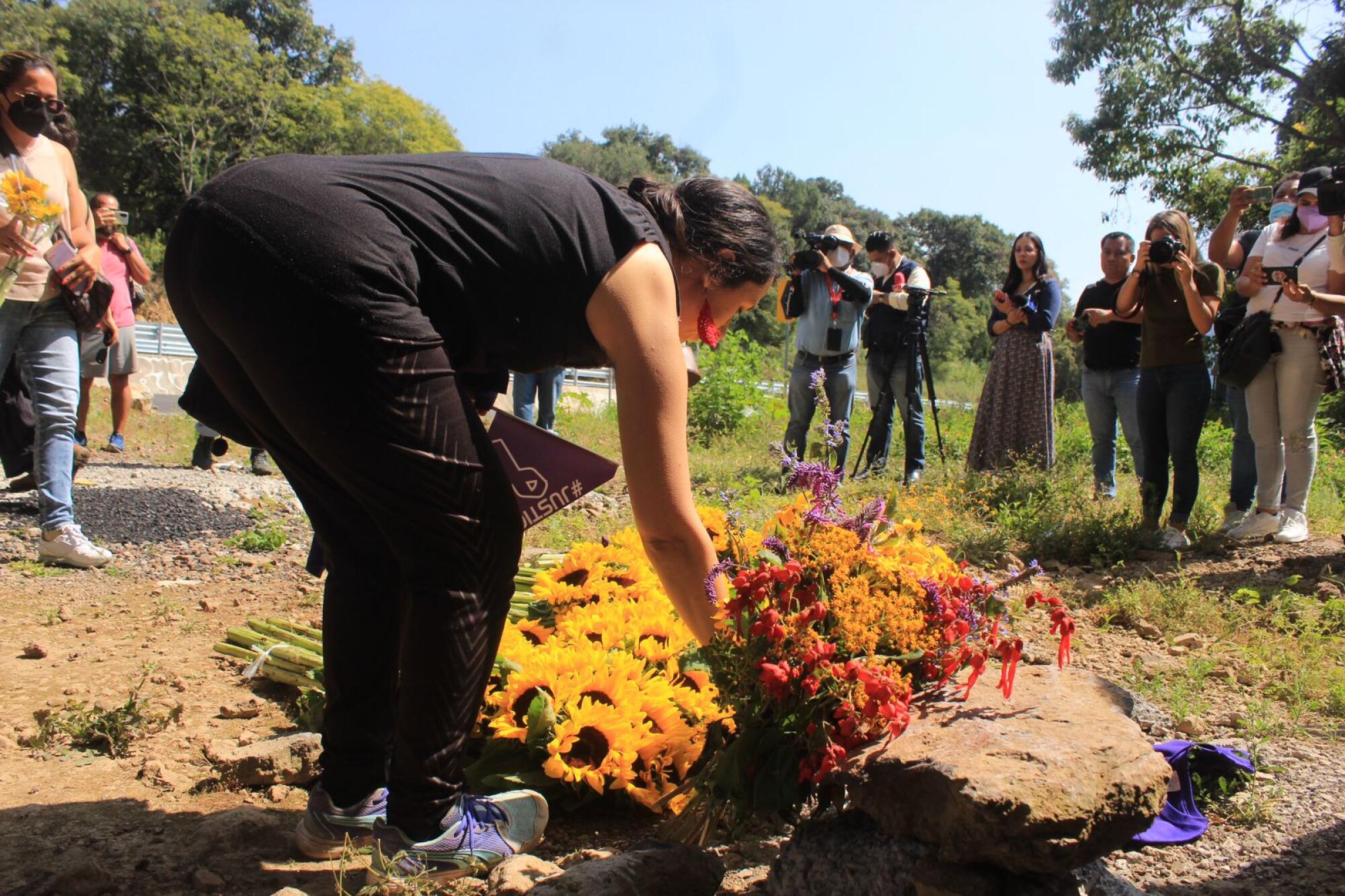
In January, after reviewing the results of the conflicting autopsies and other evidence, Mexico’s federal attorney general’s office sided with Mexico City prosecutors.
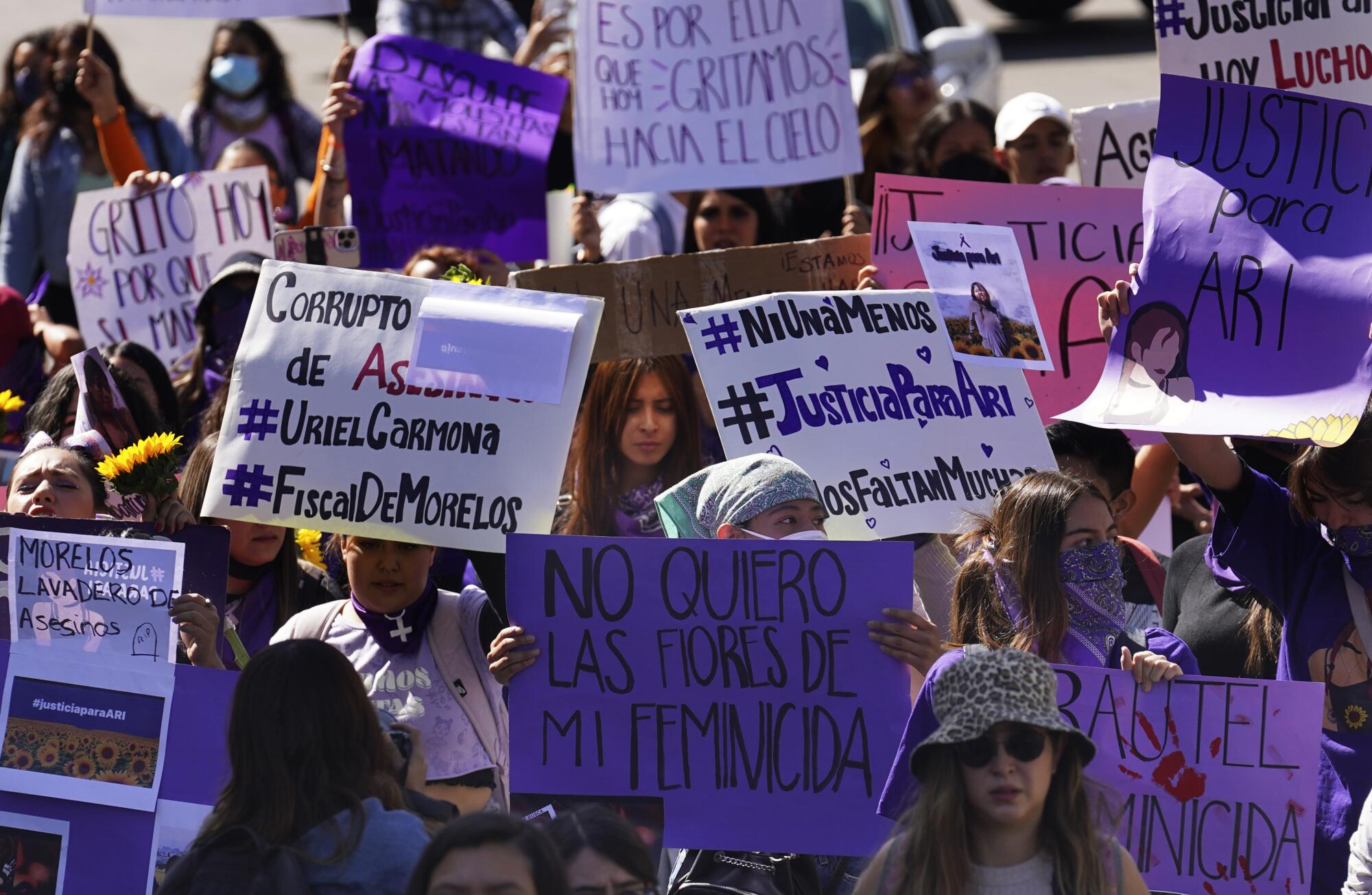
The cause of death, the attorney general found, was head trauma from a “blunt instrument” or contact with a flat, hard surface. The conclusion of Morelos examiners that López’s death was linked to profligate alcohol consumption “was not sustainable,” the attorney general ruled. Investigators concluded that she died in Astudillo’s apartment on the evening of Oct. 30 between 10 p.m. and 1 a.m., but provided no detail on a potential motive.
The Morelos prosecutor, Carmona, denied any wrongdoing. He labeled the work of his forensic sleuths “impeccable” and dismissed the attorney general’s finding as an “opinion.”
He and Sheinbaum, a front-runner for president in next year’s elections, hail from rival political camps, and Carmona said their differences were behind her accusations that he was trying to shield the chief suspect.
“I don’t know him or his family,” Carmona said of Astudillo. “There’s no cover-up. ... I respect the mayor, she might be our next president. But she’s lying.”
Mexico City authorities have provided additional security to López’s family to address their fears about retribution from associates of Astudillo.
“If it hadn’t been for social media, for all the noise we made to spread the word about my sister, the whole thing would have been forgotten,” Omar Rodríguez said. “And no one would be in jail today. ... I just hope that the case of my sister serves to end impunity and corruption. That money doesn’t empower one to avoid punishment.”
The attack wasn’t random but targeted at members of the women’s group, LAPD Capt. Jonahan Tippet said.
There probably would have been no reckoning, he said, if Calderón had not posted the photographs of the tattoos.
Calderón told the family that he had received death threats and no longer wished to be associated with the case. He appears to have deleted his social media profile and could not be reached for comment.
Among his last public postings was a message addressing López, after her identity became publicly known.
“I am so sorry that you are yet another victim of this rotten system,” he wrote. “I hope you have a smooth road returning home, Ari.”
He added a wish: “That no other family will have to look for their daughters, wives, cousins, girlfriends, sisters.”
McDonnell is a Times staff writer and Sánchez Vidal is a special correspondent. Special correspondent Liliana Nieto del Río contributed to this report.
- Share via
Watch L.A. Times Today at 7 p.m. on Spectrum News 1 on Channel 1 or live stream on the Spectrum News App. Palos Verdes Peninsula and Orange County viewers can watch on Cox Systems on channel 99.
More to Read
Sign up for This Evening's Big Stories
Catch up on the day with the 7 biggest L.A. Times stories in your inbox every weekday evening.
You may occasionally receive promotional content from the Los Angeles Times.
